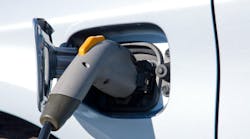One new tactic now being deployed in Europe to boost fuel efficiency doesn't have anything to do with changing the physical characteristics of engines, trucks, or trailers.
Rather, precise global positioning system (GPS) data on road “topography” is being married to truck cruise control systems to allow for more precise engine acceleration and deceleration to occur, improving fuel economy by up to 3%.
That, at least, is what Swedish truck maker Scania is claiming as it rolls out its new GPS-enhanced cruise control product — dubbed “Scania Active Prediction” — to customers in Central and Western Europe this year.
GPS is a satellite-based navigation system that taps into data gathered via a network of 24 orbiting satellites 11,000 nautical miles up in space. These satellites provide detailed electronic “maps” that motorists and truckers alike are using with greater frequency to fulfill location-finding and route-planning needs.
Scania's system, however, takes the roadway data compiled via GPS and allows the truck's cruise control system to adapt operating speed to more precisely match road topography — “looking ahead” some 3 km, or 1.86 mi., of the vehicle at all times.
Scania said the system should work with minimal hiccups because there's enough topographic map data available today for around 95% of the road network in Central and Western Europe to make it effective. However, the company takes pains to point out that this system will only deliver maximum fuel-saving benefits when used on what it refers to as “undulating routes,” where the roads are never entirely flat.
Based on a typical 40-ton “truck combination” (the term used in Europe for “tractor-trailers”) running 180,000 km (about 111,847 mi.) per year, a fuel savings of 3% would cut diesel consumption by about 1,700 litres (some 449.09 gallons) annually and reduce carbon emissions by four tons.


